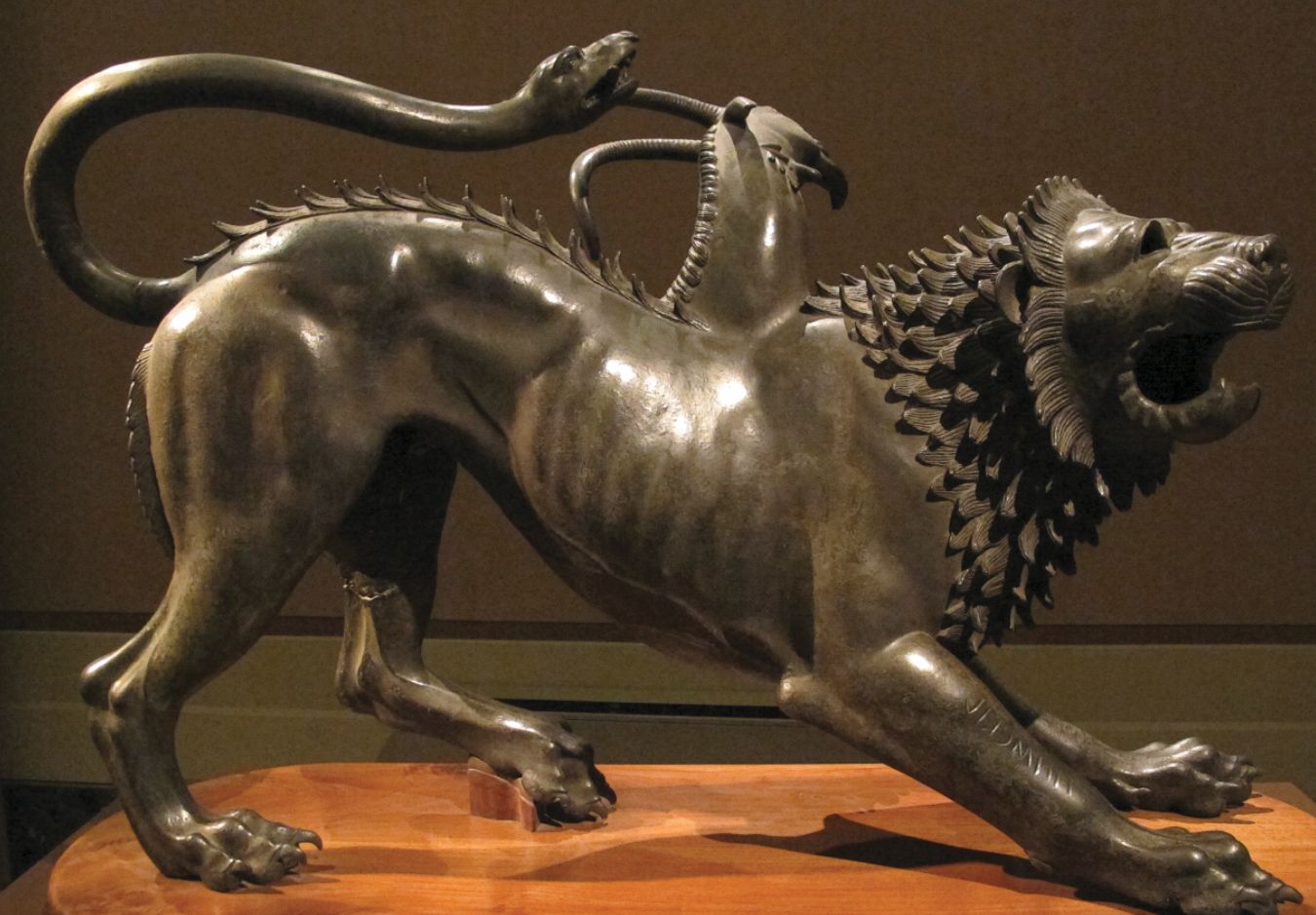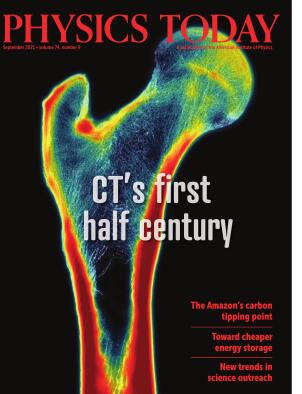An overview of complex systems
DOI: 10.1063/PT.3.4837
In 2002 Yoshiki Kuramoto and Dorjsuren Battogtokh discovered a novel phenomenon when studying a ring of identical, nonlocally coupled phase oscillators: The oscillators formed spatially distinct but coexisting regions of synchronization and desynchronization. That counterintuitive dynamic state was subsequently generalized to describe any system in which an ensemble of identical elements self-organizes into coexisting coherent and incoherent regions. Daniel Abrams and Steven Strogatz later named the phenomenon a “chimera state,” after the hybrid beast from Greek mythology that’s composed of parts of a lion, a goat, and a snake.

Chimera states are named after the fire-breathing beast from Greek mythology, which is composed of parts of a lion, a goat, and a snake. The bronze Chimera of Arezzo, found in the Italian town in 1553, dates from roughly 500–400 BC.
SAILKO/WIKIMEDIA COMMONS/CC BY-SA 3.0

At that time, interest in complex systems was exploding, so chimera states quickly drew attention from the nonlinear dynamics community. Research into the states draws on principles from that field as well as those of complex networks, self-organization, stochasticity, and time delay. They embody complexity like few other topics and wrap it up in a simple but head-scratchingly satisfying physical phenomenon.

Almost 20 years after Kuramoto and Battogtokh’s initial discovery comes Chimera Patterns in Networks: Interplay between Dynamics, Structure, Noise, and Delay by Technical University of Berlin physicist Anna Zakharova. Her new book provides the nonlinear dynamics and complex systems communities with a comprehensive account of the rich dynamics exhibited by chimera states. It also elucidates the role that stochasticity, time delays, and network structures play in giving rise to the phenomenon. Zakharova is perfectly positioned to give such an account, as she has spent a decade researching self-organizing systems from both theoretical and experimental perspectives. Her work, much of which is mentioned in the book, has directly contributed to the community’s current understanding of the dynamics of chimera states.
Chimera Patterns in Networks is primarily aimed at physicists, applied mathematicians, and engineers at the graduate level or beyond who are interested in chimeras and other synchronization patterns. Given the attention it pays to a blend of rich dynamics and practical considerations, the book will be particularly useful to those readers who are new to the study of complex systems that exhibit chimeras. They will appreciate how Zakharova includes a thorough discussion of topics that tend to puzzle researchers entering the world of chimeras, such as the choice and importance of parameters and initial conditions.
The book comprises four chapters, the first of which is an introduction that briefly summarizes existing literature on chimera-state research. Chapters 2 and 3 dive into amplitude chimeras and coherence-resonance chimeras, both of which are covered in the context of ring networks. Using rings as the narrative thread was a smart decision, because they both are historically important to the field and tend to be the best environment for intuitively visualizing the various important dynamic states. The book contains an especially cogent discussion of amplitude chimeras, which provide a perfect platform for exploring chimera death and investigating the effects of time delays and stochasticity. Control, on the other hand, is primarily discussed in the context of coherence-resonance chimeras.
The book closes with an exploration of novel synchronization patterns and chimera states in more general and realistic network topologies, both traditional and multiplex, rather than rings. Given her focus on limit-cycle oscillator systems, Zakharova does not discuss the analytical treatment of chimera states. Readers interested in analytical methods and the intuition they provide will thus have to go directly to the literature.
Chimera Patterns in Networks aims to highlight the richest possible dynamics exhibited by chimeras and link them to themes at the forefront of complexity—namely, stochasticity, time delay, and network structure. Zakharova is overwhelmingly successful in doing so, and the result is a text that is both practical and inspirational.
More about the Authors
Per Sebastian Skardal is an associate professor of mathematics at Trinity College in Connecticut. His research, both theoretical and applied, focuses on nonlinear dynamics, stochastic processes, and complex networks.
Per Sebastian Skardal. Trinity College, Hartford, Connecticut.
